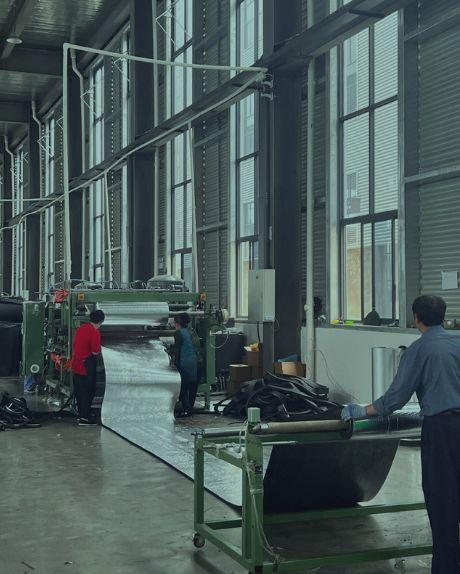What Are You Looking For?
What Are You Looking For?


Are You Searching for the Ideal Rubber Insulation Material? Hairui Rubber, an industry leader in foam rubber insulation products from China, brings you this comprehensive guide on EPDM and Nitrile Rubbers - which may be perfect for your application!
EPDM (Ethylene Propylene Diene Monomer) and Nitrile Butadiene Rubber (Nitrile Butadiene Rubber) are two popular choices when it comes to synthetic rubbers, each offering distinct properties that make them suited for various applications. Let's get into this world of versatile diene monomers and explore their characteristics!
We will also explore their many applications across various sectors--from automotive to construction--and how making an informed choice can impact project success. Whether sourcing from a dependable EPDM manufacturer, or considering options that comply with harsh chemicals or extreme temperatures, be equipped with insights that will aid your decision-making process and guide informed decisions tailored to your specifications! Let's embark on this voyage of discovery so you can confidently make informed choices tailored specifically to the project!
EPDM and Nitrile Rubber find widespread application across various industries, particularly automotive applications. Their ability to withstand environmental elements makes them ideal choices for seals, gaskets and hoses.
When selecting rubber for industrial uses, understanding its weather resistance properties is critical. Natural rubber tends to disintegrate after prolonged exposure to sunlight, ozone and temperatures extremes; but synthetic options like EPDM (ethylene propylene diene monomer) make an exceptional choice in outdoor settings due to their UV and ozone resistance while maintaining flexibility across a wider temperature range compared to many alternatives - making EPDM suitable for applications from automotive weather seals to roofing membranes.
EPDM (Ethylene Propylene Diene Monomer) stands out with its superior weather resistance, making it a premier choice for outdoor applications.
Nitrile rubber excels when applied in environments requiring oil and fuel resistance, such as automotive and industrial settings where exposure to hydrocarbon-based fluids occurs frequently. Thanks to its resistance against such hydrocarbon-based fluids, nitrile rubber has proven indispensable in these fields.
Although both materials have their own set of strengths, choosing between them ultimately comes down to environmental conditions: If your challenge involves prolonged sunlit exposure or fluctuating climate conditions - opt for EPDM; otherwise if oily substances threaten material elasticity-Nitrile is the superior option.
Deliberating between EPDM and Nitrile Rubber depends on your specific application needs. Consider several key considerations when making this choice:
EPDM is typically chosen for outdoor applications involving minimal oil exposure; however, for applications that frequently encounter oils or fuels, Nitrile Rubber might be the superior option.
Selecting the correct rubber material requires taking several factors into account, including flexibility, temperature resistance and environmental conditions. Each application may necessitate different characteristics; for instance if working on industrial equipment exposed to harmful chemicals opt for chemical resistant elastomers; similarly if your project demands high elasticity coupled with outstanding tear resistance such as automotive applications specific grades are designed specifically for these tasks should be chosen.
Sustainability is fast becoming an influential factor when selecting materials. As industries strive toward eco-friendliness, natural rubber or synthetic alternatives with lower environmental impacts have gained ground. By considering not just performance metrics but also sourcing practices and lifecycle assessments of materials used, you not only stand to improve product effectiveness while contributing positively towards sustainability initiatives - two goals worth striving towards in today's climate-concerned world.
Understanding the differences between EPDM vs Nitrile Rubber is crucial for selecting the right material for your insulation needs. Both synthetic rubbers offer unique advantages, and the choice ultimately depends on your specific application requirements.
At Hairui Rubber, we offer a wide range of foam-rubber insulation products made from both EPDM and Nitrile Rubber. Our team of experts can help you determine the best material for your project, ensuring optimal performance and longevity.

Don't compromise on quality – choose Hairui Rubber for all your insulation needs. Contact us today to learn more about our EPDM and Nitrile Rubber products and how they can benefit your applications.
Get a Free Consultation with Our Insulation Experts Now.